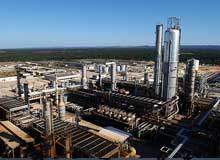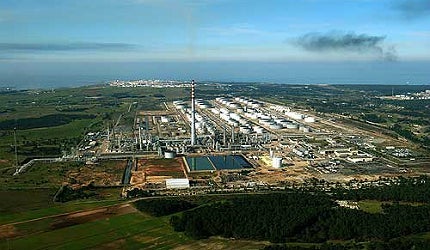
Galp Energia’s Sines refinery is located in the Port of Sines in Portugal. It is one of the largest refineries in Europe, with an annual processing capacity of 10.8mt. It commenced operations in 1978 and has since been modified since to add conversion units.
The refinery is spread across 320ha and comprises of 25 process units. It produces gasoline, diesel, liquefied petroleum gas (LPG), fuel oil, naphtha, jet fuel, bitumen and sulphur. These products conform to the latest environmental requirements and contain very low levels of sulphur (10ppm).
In 2007, an expansion project, called the deep conversion project, which would add new conversion units to the refinery, was planned. The €1.4bn project was completed in third quarter of 2012. The hydrocracker began commercial production operations in January 2013.
Sines refinery expansion project
The deep conversion project was launched to modify the refinery’s production profile to suit the fuel needs of the region. Diesel is in short supply in the region and a shift towards diesel from gasoline is expected in future. Demand for diesel in the region is, therefore, anticipated to increase.
The project incorporated state-of-the-art technology at the refinery to produce higher quantities of diesel. Following completion of the project, rates of diesel production increased by 2.5mt/y.
The project also increased the refinery’s processing capacity of heavy crude oil. Since heavy crude oil is available at lower prices, the conversion project reduced the raw material costs as well. It also helped Galp in reducing diesel imports.
Construction on the project commenced in December 2008. A new hydrocracker unit, which produces diesel and aviation fuel, was added to the refinery. The new unit uses Chevron’s deep-conversion Isocracking technology. It processes 43,000bpd of heavy vacuum gas oil, which is used to produce Euro 5 compliant diesel.
A 90,000Nm³/h steam reformer was also built for producing hydrogen. The steam reformer uses technology licensed from KTI / Technip. Other units which were added to the refinery included an LPG splitter, sulphur recovery unit (SRU), deisobutanizer, sour water stripper, tail gas treatment unit (TGTU) and other utilities. The SRU and TGTU use Siirtec Nigi’s HCR technology.
The new units occupy 28ha of the site. The existing units at the refinery were also modified and upgraded. These units included the crude distillation unit, vacuum distillation unit, visbreaker unit, fluid catalytic cracker unit and utilities and offsites.
Contractors linked with Galp Energia’s Portuguese refinery
In December 2009, Tecnicas Reunidas was awarded a €1.08bn lump sum turnkey contract for the conversion project. Tecnicas Reunidas was also awarded the engineering, procurement, construction and management contract in 2007.
Siirtec Nigi won an engineering and procurement contract in July 2009 to supply a thermal incinerator package for the refinery. The incinerator is used to treat tail gas from the SRU and TGTU. Siirtec Nigi was also awarded the contract for the SRU and TGTU. Ensul Meci was awarded a €12m contract for building one of the new units of the refinery.
Set Linings won a contract for providing 900m³ of refractory lining for the steam reformer. The contract was awarded in 2010 and completed in four months.
In April 2010, ALE completed the transport and lifting of two reactors, a stripper and a fractionator for the conversion project. The reactors were transported from Italy to Portugal on a 1,800t self-geared vessel. They were erected using ALE’s new Terex Demag CC8800-1 crane.
Ringo Valvulas provided 16 units of Top Entry ball valves for the refinery. The valves are operated by ROTORK or METSO pneumatic actuators and are designed to withstand temperatures of more than 300°C.
Fluor Corporation was awarded the contract for the construction of the hydrodesulphurisation unit in 2002. Fluor subcontracted TPF Planege for erection of the unit.
Related content
Saratov Oil Refinery Expansion, Russian Federation
Saratov oil refinery is located in the city of Saratov, Russia. It was commissioned in April 1934 and can process 7mt of crude annually.
Presidente Barnardes Refinery Expansion, Cubatao, Brazil
The Presidente Bernardes Refinery (Refinaria Presidente Bernardes) in Cubatao, State of Sao Paulo, Brazil, is one of the country’s largest.


